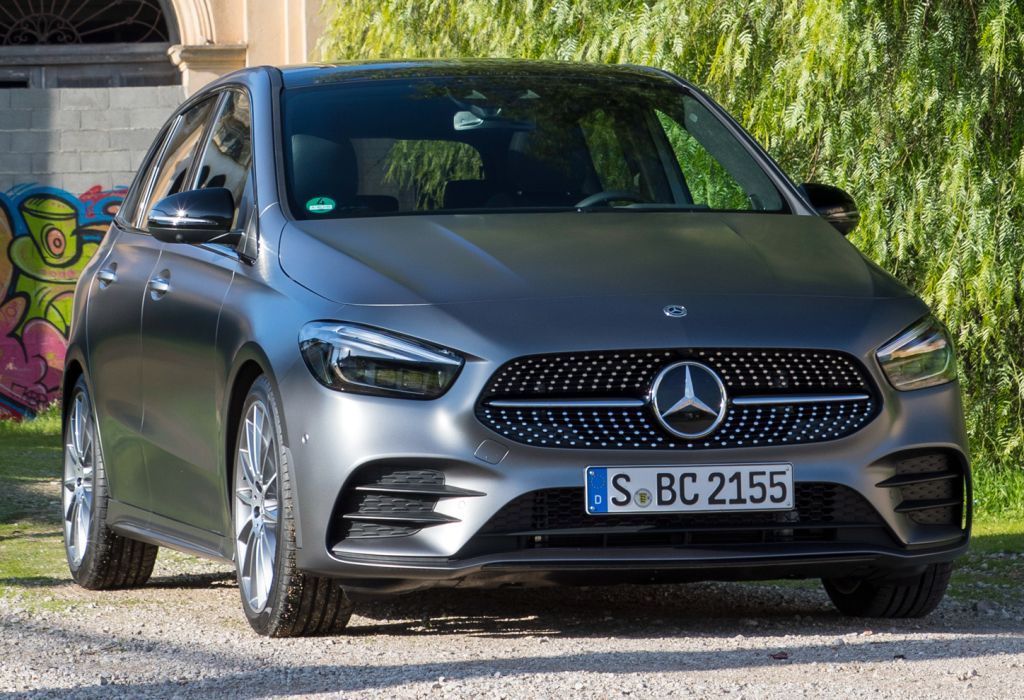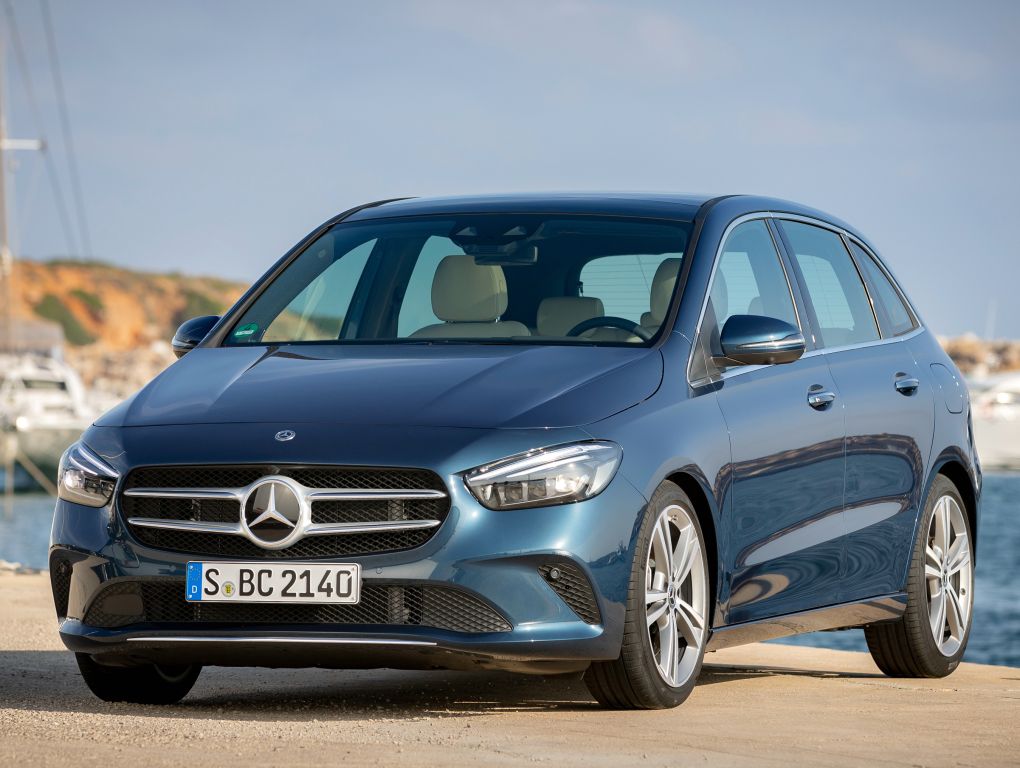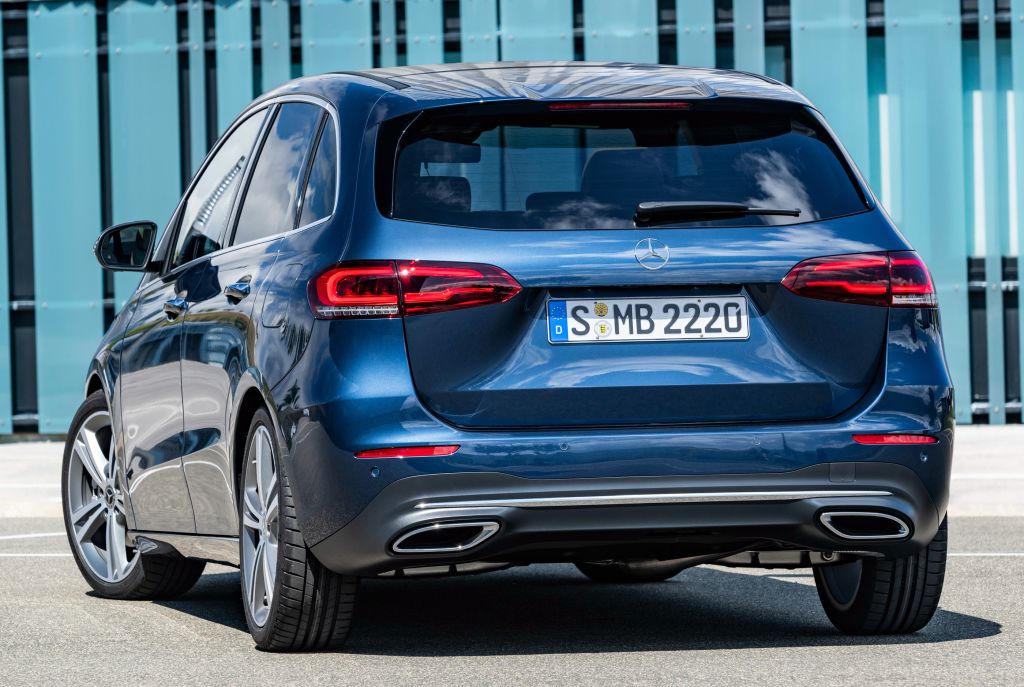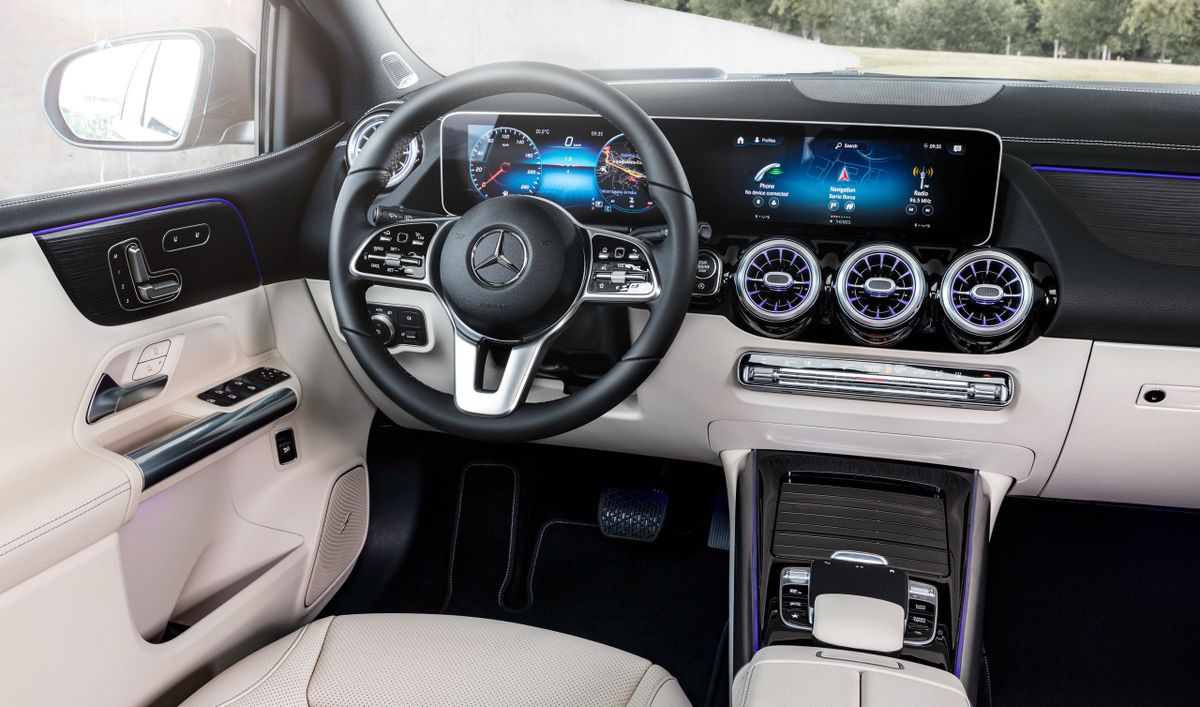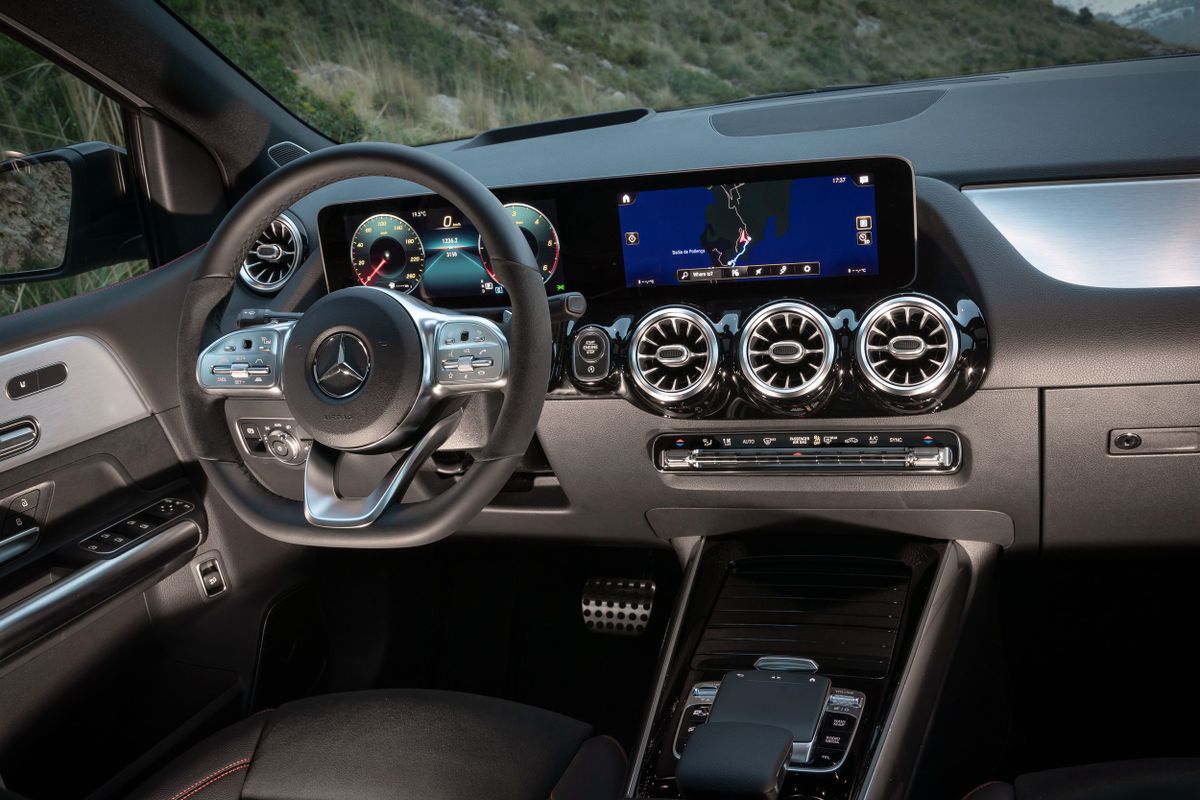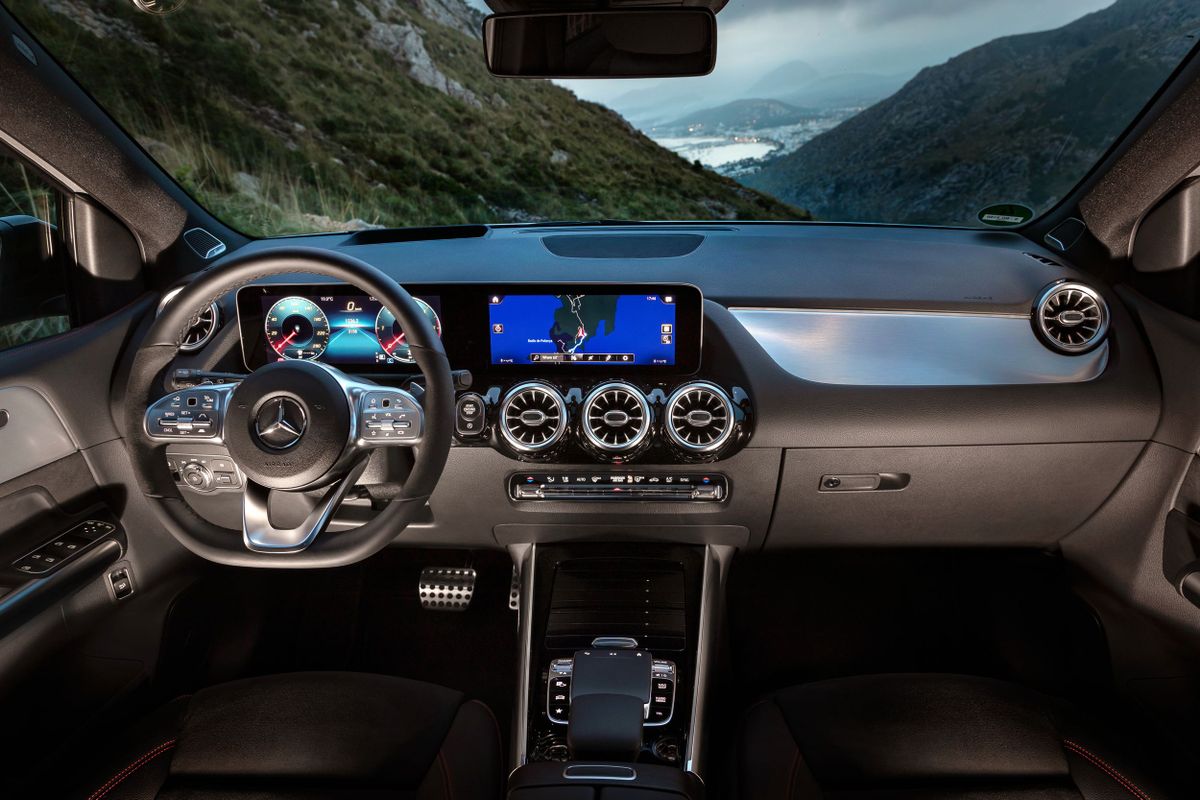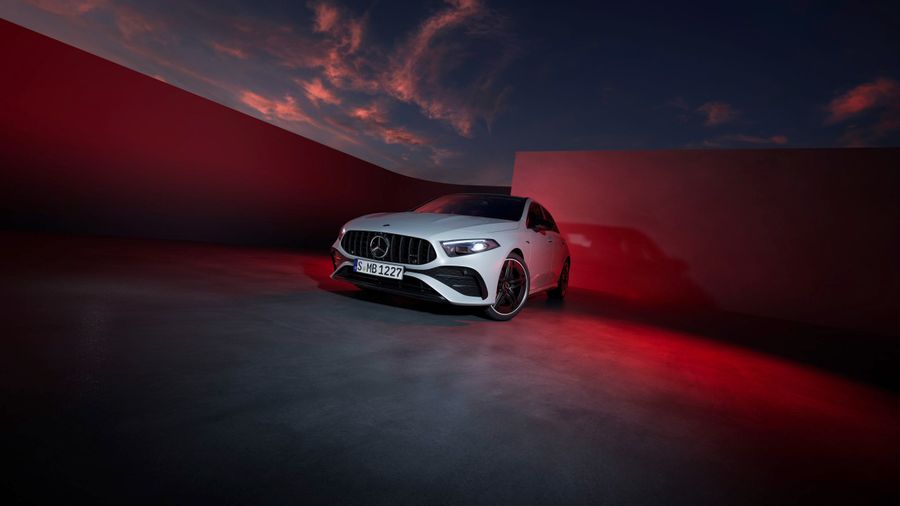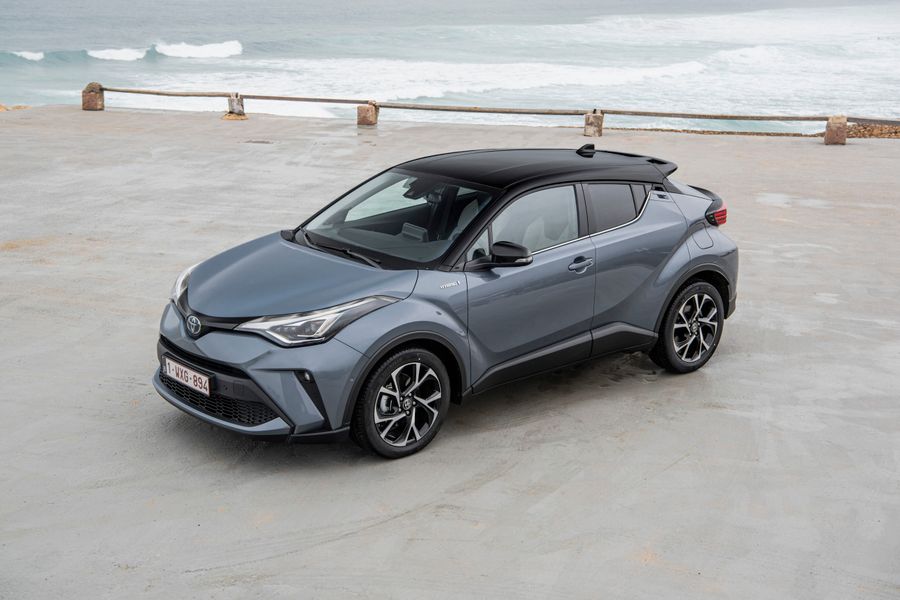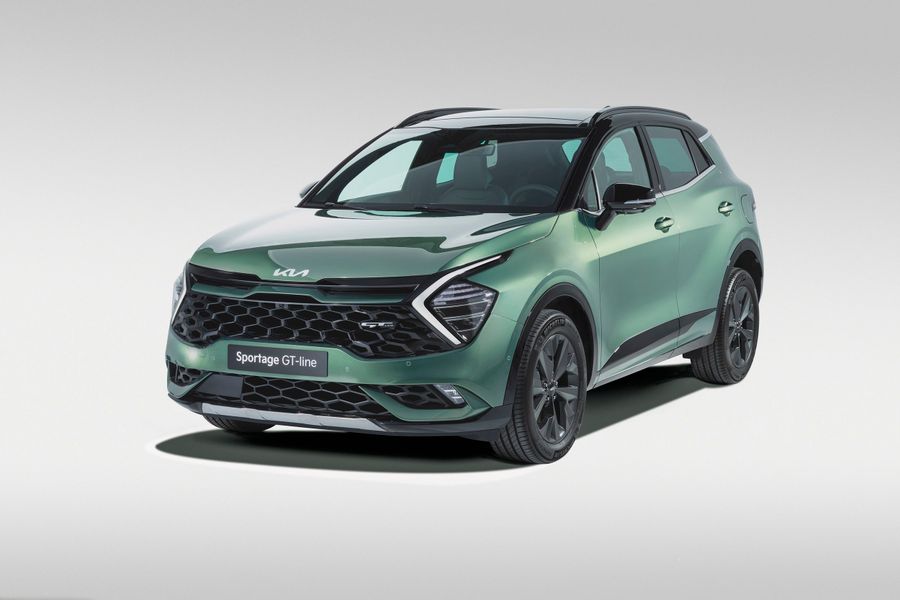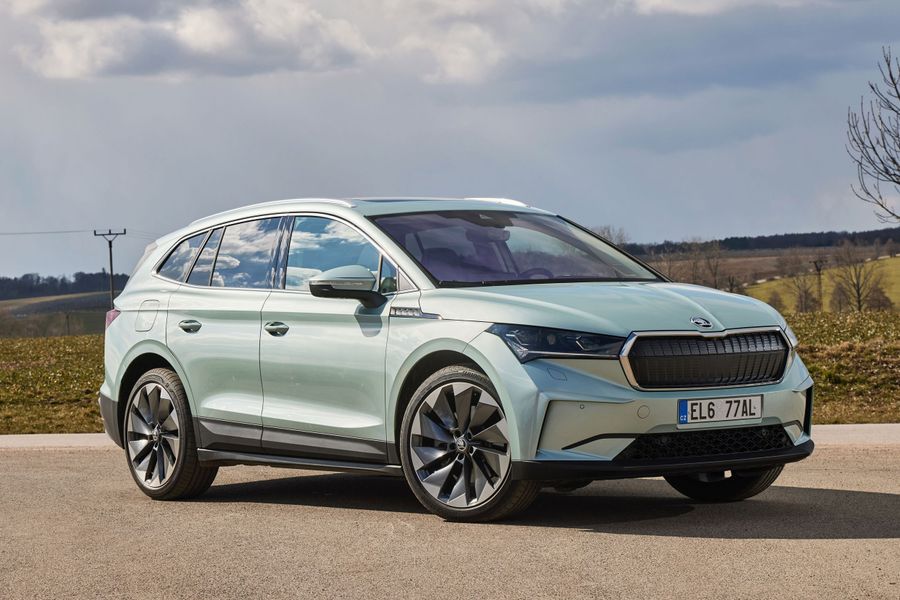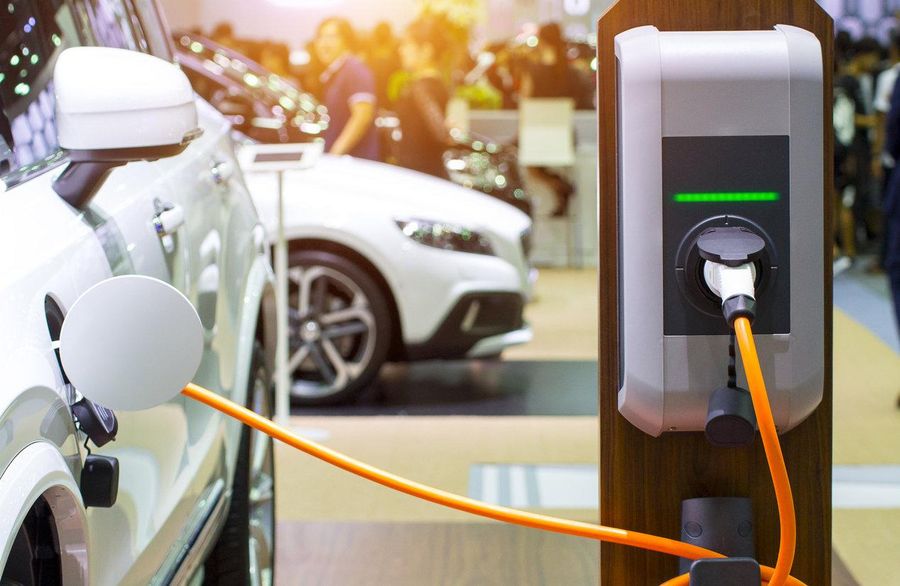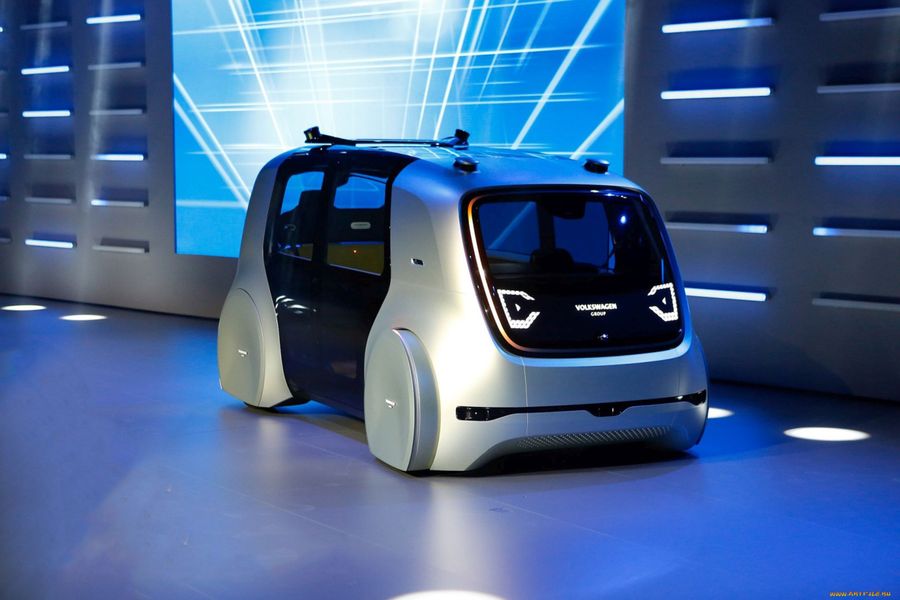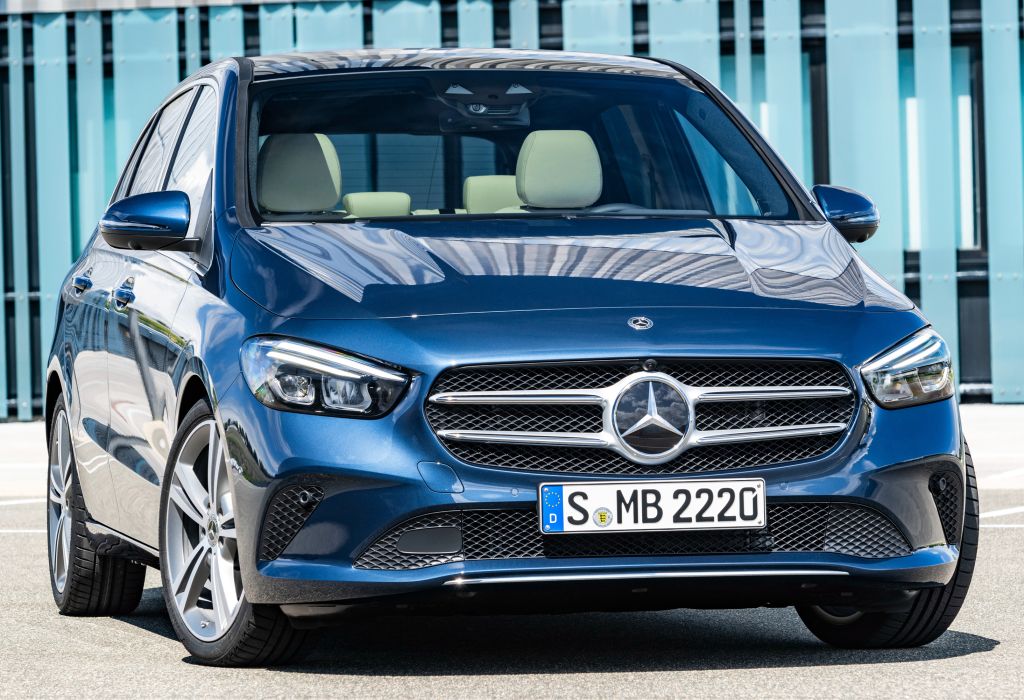
More practical and stylish than ever before
The third generation Mercedes B-Class was first unveiled at the 2018 Paris Auto Show. The company positioned the W247 as a premium five-seater compact van. The model was 4,419 mm long, 1,796 mm wide and 1,562 mm high, and has a wheelbase of 2,729 mm (+30 mm more than the W246 could offer). The dimensions of the W247 corresponded to a middle-class car. The third generation resembled the A-Class latest versions, which is not surprising, since the W247 is built on the MFA2 (Modular Front Architecture) platform, the same that was used to build the A-Class W177. The new B-Class is actually a version of the A-Class with a high body and superb functionality.
Britta Seeger, board member of Daimler AG who was responsible for marketing and sales of Mercedes-Benz vehicles, described the W247 as ‘more practical and stylish than ever before’, which was very pretentious and somewhat contradictory for a family car.
Design
The designers of the second generation B-Class believed that it was their task to visually highlight the new vehicle in the minivan segment, so they tried to make the body lines sportier, the front face more aggressive and road-hugging.
They again managed to reduce the drag coefficient, bringing it to 0.24. In addition, the designers took care of a more careful fit of the parts and they managed to minimize the noise from the air stream flowing around the vehicle at high speed.
A rather large spoiler was installed on the roof of the vehicle to improve aerodynamics and to make the vehicle look sportier. The new B-Class was equipped with low-profile headlights, the position of which could be adjusted in accordance with driving conditions.
Interior
The interior of the W247 relative to the second generation of the B-Class was finalized, but not totally redesigned. So, the center console became slightly smaller, which made the middle rear seat more comfortable (but users still have some complaints about it).
Since 2019, it has become possible to move the rear seats forward by as much as 14 cm and put the backrest in an upright position, thereby changing the trunk compartment from 455 to 705 liters. An adjustable trunk compartment floor with the rear seat folded made it possible to increase the cargo compartment to an additional 1,540 liters behind the front seats. And the passenger front seat also folded, which further increased the cargo capacity of the W247.
When developing the W247, the designers improved the geometry and capabilities of the driver’s seat. The angle of the seat cushion and backrest could be electronically adjusted taking into account the orthopedic requirements. The seat had a position memory function. By the way, compared to the single-platform W177, the driver’s seat was located 90 mm higher.
Control
The third generation of the B-Class featured the MBUX (Mercedes-Benz User Experience) multimedia system, which, according to the developers' plan, was supposed to provide nothing less than an emotional connection between the vehicle and the driver, as well as the vehicle and passengers.
The system was borrowed from the new generation GLE. It integrated control and multimedia functions and was able to learn through artificial intelligence, adapting to the needs of the driver and other regular visitors to the W247's interior.
The system included an augmented reality navigation display, intelligent voice control with natural language recognition and vehicle tracking system. If necessary, the monitor could display relevant online content, for example, current prices for gas stations and much more.
Safety
The new B-Class was developed and tested at the Mercedes-Benz Technology Centre for Vehicle Safety (TFS). The vehicle geometry was finalized with due account for the analysis of real accidents. Many body structure elements were made of ultra-high-strength steel, especially in the passenger compartment, which was the basis of the body’s safety system.
Moreover, the new B-Class was equipped with an extended active emergency braking system, which aimed to reduce the likelihood or even prevent collisions with slow-moving, stopping or standing vehicles, as well as pedestrians and cyclists. The base version provided the driver and front passenger with three-point seat belts with pyrotechnic tensioners and belt tension limiters. Both outer rear seats were equipped with belt tensioners and belt force limiters.
It should be noted that the third-generation vehicles were for the first time equipped with semi-autonomous control systems in certain situations using cameras and radar systems that could predict movement up to 500 meters ahead. Moreover, the list of options included Lane Change Assist and Active Brake Assist, which stopped the vehicle if the driver ignored signals of a potential collision.
Engines and chassis
All engines of the third generation Mercedes B-Class complied with the latest Euro 6d environmental standard. The base version could be equipped with the following engines and transmissions:
- B 180 (136 hp, 200 Nm) with a 7G-DCT transmission (combined fuel consumption amounted to 5.6-5.4 l/100 km);
- B 200 (163 hp, 250 Nm) with the same transmission and fuel consumption figures;
- B 180 d (116 hp, 260 Nm) with a 7G-DCT transmission, but its combined fuel consumption amounted to 4.4-4.1 l/100 km;
- B 200 d (150 hp, 320 Nm) with a 8G-DCT dual-clutch transmission (combined fuel consumption amounted to 5.4-4.2 l/100 km);
- B 220 d (190 hp, 400 Nm) with a 8G-DCT transmission, while the combined fuel consumption amounted to 4.5-4.4 l/100 km.
The W247 was the first model to feature the eight-speed gearbox and the OM 654q 2.0-liter transverse engine. The engine’s compact design allowed the exhaust gas post-processing system components to be installed directly on the engine where the exhaust gas temperature was higher, which ensured more efficient exhaust gas treatment.
The W247 could be equipped with two suspension versions. Apart from the base suspension, there was a lowered suspension for a more comfortable ride and a suspension with active adaptive damping, which allowed the driver to adjust the damper while driving. More powerful modifications of the W247 or those that had additional suspension options were equipped with an advanced four-link rear axle, comprising a large number of aluminum elements.
By the way, in August 2019, Mercedes-Benz introduced a plug-in hybrid version with a 1.3-liter M 282 petrol engine producing 118 kW (160 PS) combined with a 75 kW (102 PS) electric motor. The 15.6 kWh lithium-ion battery provided a drive range of up to 77 kilometers in 100% electric mode.
Estimates
Such things as the new excellent control system, aerodynamics and revamped design offered by the third generation B-Class did not surprise anybody, since competitors could offer the same good functionality and capabilities, but at lower prices.
Among the vehicle’s shortcomings was the poorly equipped base version. So, you had to pay a lot to get the options provided for this model. When considering the W247 as an MPV, customers, especially those with families, preferred competitors like the C4 Picasso, Scenic or C-Max, because the Mercedes had the smallest trunk without a flat floor of the cargo compartment. The vehicle had no additional drawers, and the rear seats could not be folded independently of each other. Thus, the third generation did not fully correspond to the design of an estate.
At the same time, drivers note the excellent driving performance of the W247, the adequate behavior of the vehicle under any road conditions, the convenience and comfort of handling. This is the main advantage of this model.


